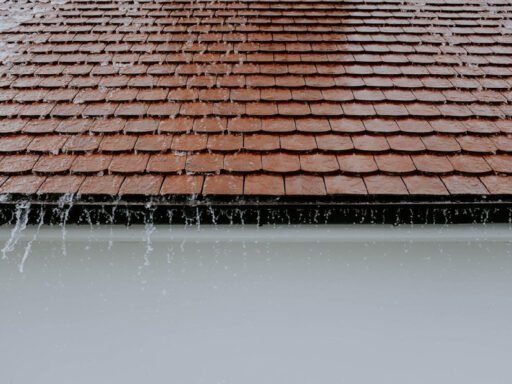Experiencing a fire in your home can be one of the most devastating events imaginable. It poses an immediate danger to life and property, but the aftermath – charred remains, smoke-stained walls, and pervasive odors – can linger long after extinguishing the flames. As you restore your home, it’s crucial to approach the cleanup process with diligence and care.
This guide delves into expert tips and strategies to help you navigate cleaning up fire damage residue. Whether you’re facing minor smoke stains or extensive structural damage, these proven techniques will empower you to reclaim your space and begin healing.
Assess the Damage
Before rolling up your sleeves and diving into cleanup efforts, take a step back to assess the full extent of the damage. Walk through each room of your home and carefully document areas affected by fire, smoke, and the water used during firefighting efforts.
This thorough evaluation will help you develop a comprehensive cleanup plan and determine whether you can handle the project yourself or if searching for water damage restoration service near me on Google is the better option.
Prioritize Safety
Safety should always be your top priority when dealing with fire damage cleanup. Before entering your home, ensure the structure is stable and free from hazards such as structural damage and electrical issues.
Wear appropriate personal protective equipment, including gloves, goggles, and a mask, to shield yourself from harmful particles and contaminants. Additionally, be cautious of slippery surfaces and potential hidden dangers as you navigate through the debris.
Ventilate the Area
Effective ventilation is essential for dissipating lingering smoke odors and improving indoor air quality. Open windows and doors to facilitate airflow throughout your home, allowing fresh air to replace stale, smoke-laden air. Consider using fans or air purifiers to enhance ventilation and expedite the removal of smoke particles trapped in carpets, upholstery, and other materials.
Remove Soot and Debris
Soot, ash, and debris left behind by the fire can cling to surfaces and exacerbate damage if not promptly addressed. Begin by gently vacuuming loose debris using a vacuum cleaner equipped with a HEPA filter to prevent particles from becoming airborne. Use a dry sponge or cloth to wipe down surfaces, but do not scrub too vigorously – to avoid embedding the soot further.
Clean Walls, Ceilings, and Floors
Smoke residue can leave behind stubborn stains and odors on walls, ceilings, and floors, requiring thorough cleaning to restore their appearance and integrity. Depending on the severity of the damage, you may need to employ specialized cleaning solutions and techniques to remove smoke residue effectively. Mild cleaners or vinegar solutions often suffice for painted surfaces, while more stubborn stains necessitate professional intervention.
Treat Fabrics and Upholstery
Fabrics and upholstery are particularly susceptible to absorbing smoke odors and stains, necessitating thorough cleaning to eliminate lingering traces of fire damage. Launder washable fabrics use hot water and detergent, and vinegar is added to the wash cycle to help neutralize odors. For upholstered furniture and draperies, consider enlisting the services of professional cleaners or utilizing specialized smoke odor removal treatments for optimal results.
Clean and Inspect HVAC Systems
If left unchecked, your home’s HVAC system can become contaminated with smoke and soot particles, spreading odors and contaminants throughout the property. Clean or replace air filters, ducts, and vents to prevent smoke residue from circulating and recontaminating cleaned areas. Additionally, schedule an inspection by a qualified HVAC technician to ensure that the system is functioning properly and free from fire-related damage.
Address Water Damage
In many cases, the water used to extinguish the flames can exacerbate the effects of a fire, resulting in water damage and potential mold growth if not promptly addressed. Thoroughly dry affected areas using fans, dehumidifiers, and moisture meters to prevent mold and mildew from taking hold. If water damage is extensive, enlist the assistance of a water damage restoration service near you to mitigate further damage and restore affected areas.
Seal and Deodorize
Once surfaces have been cleaned and restored, consider sealing porous materials such as wood and concrete to encapsulate any remaining odors and prevent them from resurfacing. Utilize odor-neutralizing products or ozone generators to eliminate stubborn smoke odors lingering in carpets, furniture, and other surfaces. Follow product instructions carefully and ensure proper ventilation during and after treatment to achieve optimal results.
Monitor for Lingering Issues
Even after completing the cleanup and restoration process, it’s essential to remain vigilant for any lingering issues that may arise. Keep an eye out for signs of persistent odors, mold growth, or structural damage, and address any issues promptly to prevent further damage and ensure the long-term integrity of your home. Regular maintenance and inspections can safeguard against future problems and provide peace of mind for you and your family.
Conclusion
Cleaning up fire damage residue is a challenging and often overwhelming task, but restoring your home to its former glory is possible with the right knowledge, approach, and resources. By following the expert tips outlined in this guide and seeking professional assistance when needed, you can effectively remove traces of fire damage and reclaim your space. Remember to prioritize safety throughout the cleanup process and be patient, as restoration may take time. With perseverance, determination, and the support of trusted professionals, you can overcome the challenges of fire damage and embark on the journey toward healing and renewal.






